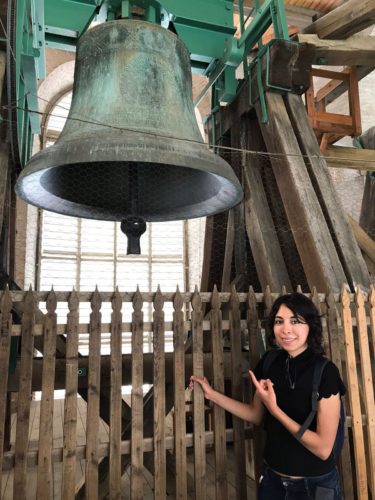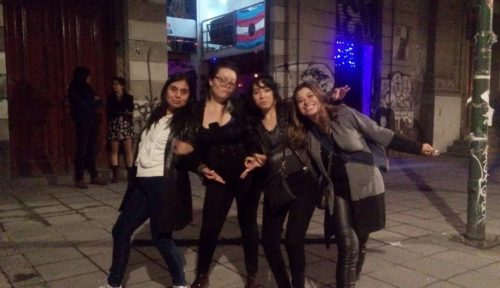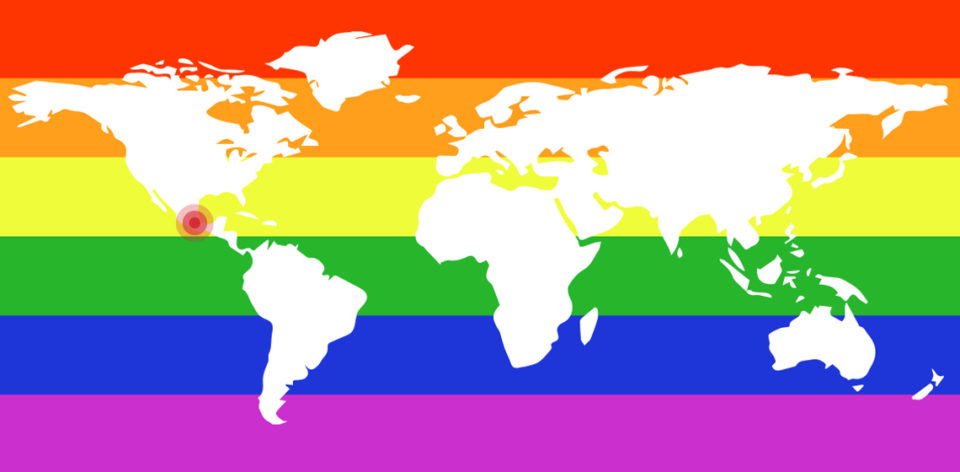This month we are travelling to Mexico City. Did you know that 130 million people live in Mexico? Only the capital, Mexico City, has almost as many inhabitants as our entire country. But how is it to live there as a lesbian? Let us hear what a local has to say.
Thank you for accepting our invitation. Can you introduce yourself please?
My name is H. Torres and I come from Mexico City. Back there I was working in an office but two years ago I came to Budapest to do a masters. My background is in sociology and translation. During the summer, you can find me in the outdoors: visiting towns, going to concerts and exploring the city. In winter, however, I like hanging out in small movie clubs or local pubs. My hobbies include watching films, geocaching, and taking photographs.
Sadly, since I arrived a bit before the pandemic, I haven’t had the chance to get really involved with the local lesbian scene. I use apps to meet lesbian and queer locals and foreigners, but when I get the chance, I even attend local LGBT joints and events. I think that taking part of the local collective action, no matter how small our involvement may be, is essential to make a change. Although I may be a foreigner, I have made Budapest my home a couple of years ago. Hence, I do feel committed to participate in community organization. Likewise, it makes me sad to see the backwards movements of the last couple of years.

We are happy to have you with us. If you think about Mexico, how is the LGBTQ situation there?
The situation in Mexico is very complex. On the one hand, I think there have been massive improvements in the political and legal sphere over the last decade, particularly in Mexico City, which is a relatively progressive city. Specifically, the trans movement has achieved significant conquests, such as the gender identity law. Same-sex marriage is up to each state, and the good news is that currently about two thirds of them perform and accept it. Although still very marginal, the intersex community has managed to gain more public visibility. Representation in pop culture has also improved over the years and I believe that has helped a lot.
Having said all that, the situation for LGBTQ persons is still generally precarious and oftentimes dire, especially in the rest of the country. Catholicism and sexism are both deep-seated in society across all sectors, and, in addition, social inequality is very pronounced. All of this translates to vastly contrastive experiences for queer individuals depending on their social positions or location (city vs. countryside, for example). I think that, particularly in countries as unequal as Mexico, it’s impossible to isolate sexual identities from other social categories like race or class. For example, lesbian visibility and acceptance is usually better in sectors that are already more advantageous.
In sum, I would say that the big developments tend to stay at the discursive and legal levels and have not often materialized in the actual experience of individuals. However, we are slowly getting there.

What’s the situation in Mexico City, especially regarding lesbian community life?
Mexico City is huge and very diverse, so due to its unequal conditions, it greatly depends on the area. As for lesbian social life, I can say that within the last decade there has been a significant growth, in terms of activism, venues, and joints. I definitely see the difference from when I was in university ten years ago when these happenings weren’t that common at all. I think the growing urban women’s rights movements have also had a lot to do with these changes.
Some local lesbian and feminist collectives organize cultural, political, and social activities. A very central point of lesbian and feminist life is the downtown venue La Gozadera, which is also known for its lesbian parties. There is a big hotspot of queer nightlife in the city’s Zona Rosa, a collection of streets full of bars and clubs. However, most of these are vastly dominated by gay males, and lesbian-specific joints still remain margnal. The Pride March in Mexico City has also become huge, but because lesbian visibility there was also not that great, an alternative initiative was launched a couple of years ago called Marcha Lencha (Dyke March). Nevertheless, I think it’s important to mention that the growth of these movements have recently entailed inward clashes or tensions between the different communities.

Finally, can you share your opinion about coming out?
I’m not a fan of big announcements and I feel very lucky that I didn’t grow up in a homophobic environment. Still, I find that walking the line between personal safety or comfort, for example at the workplace or with family, and achieving a sense of authenticity can create a tension that can be difficult to deal with. As a result, finding a balance between these can be important to feel at peace with oneself.
Curiously, for me coming-out has frequently become a mutual experience. I believe that no matter how closeted, queers always have a way to find each other. As a recent case in point, my coming-out to a fellow foreigner friend became her coming-out to me as well. I was honestly pretty surprised (she wasn’t).

